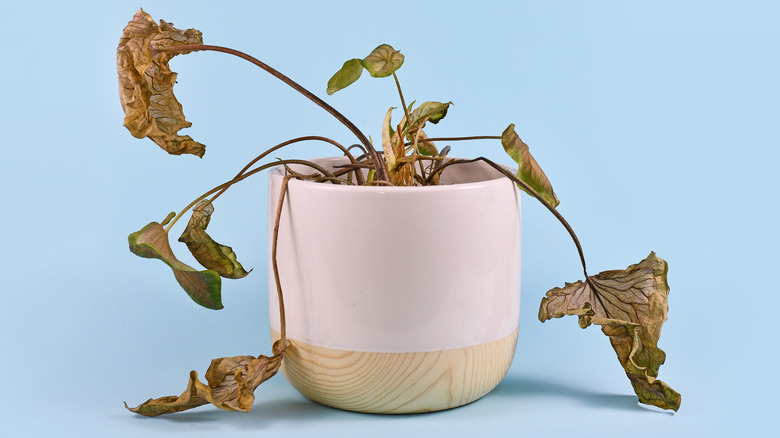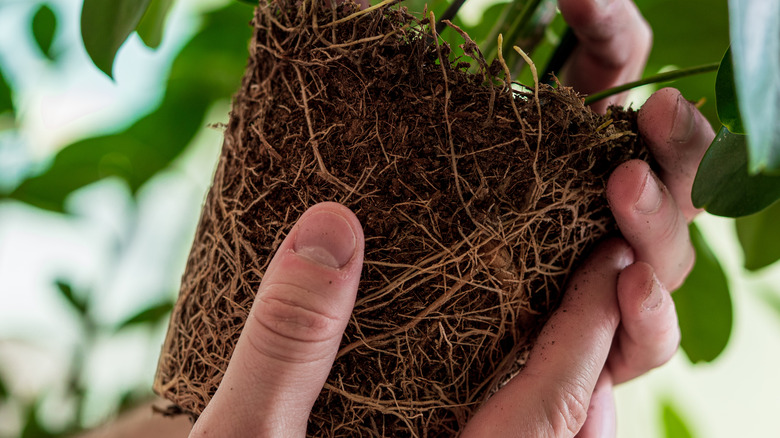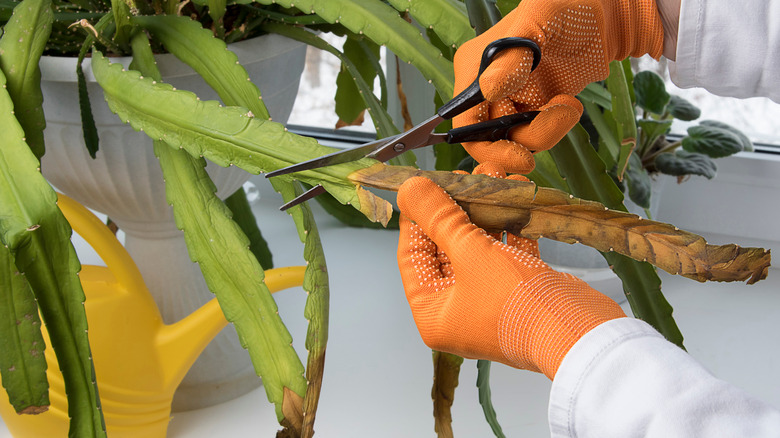How To Know If Your Plant Is Dead Or Just Dormant
Gardeners and houseplant enthusiasts alike are all too familiar with the heartbreak sometimes associated with caring for plants. There are so many factors that contribute to the health of our leafy companions that sometimes even the most expert gardener might not be certain what went wrong. The next time the heartbreak of a dead plant strikes, make sure that your vegetation is truly done-for and not just dormant before you throw it out. On the outside, it might look dead as a doornail, when in reality it just needs some time to hibernate before branching off into new growth. That's right, there could still be hope for your dilapidated-looking plant child!
According to Plant Decor Shop, plants will sometimes go dormant in winter in order to prepare for new growth in spring. A dormant plant may be wilted, stop growing, and start dropping leaves. Dormancy can also be induced when a plant undergoes stress from an environmental change, like being moved or experiencing temperature changes.
Signs that a plant is dormant
To check if your plant is dead or just dormant, snap off the tip of a stem or use your fingernail to scratch away a little of the outer layer. If you find some green or white on the inside, it's still alive and is likely just dormant. If the plant is brown or gray all the way through or you're unable to scratch away an outer layer, it is probably dead. If that's the case, check elsewhere on the plant to see if you can find any areas that are still alive. Be sure to trim away dead areas so that the plant can focus its energy toward new growth.
Another method is to examine the roots of the plant to see if they are still in good shape. Healthy roots are white or tan in color, strong, flexible, and free of mold and mildew, per Summer Winds Nursery. If the outer roots are dead, check if the inner root ball is still alive and cut away the rotting outer roots.
How to care for a dormant plant
Dormant plants generally need less maintenance than when they're in their normal growth phases. You should only water your dormant plant when the top 2 inches of soil feel dry, according to Happy Sprout. Move the plant away from drafts to a location where it will remain at a steady and normal room temperature.
Since dormant plants are in a state of rest, they're unlikely to absorb nutrients from fertilizer. It's recommended that you hold off on adding any fertilizer to the plant's soil until it's stable and ready for spring growth. Instead, just continue to monitor the plant by making sure it gets enough light, trimming off any areas that are completely dead, and watering when the soil has dried out. It's also a good idea to occasionally dust the leaves of your plant to keep them healthy and happy. Gently pass a microfiber cloth over the leaves to clean them.


